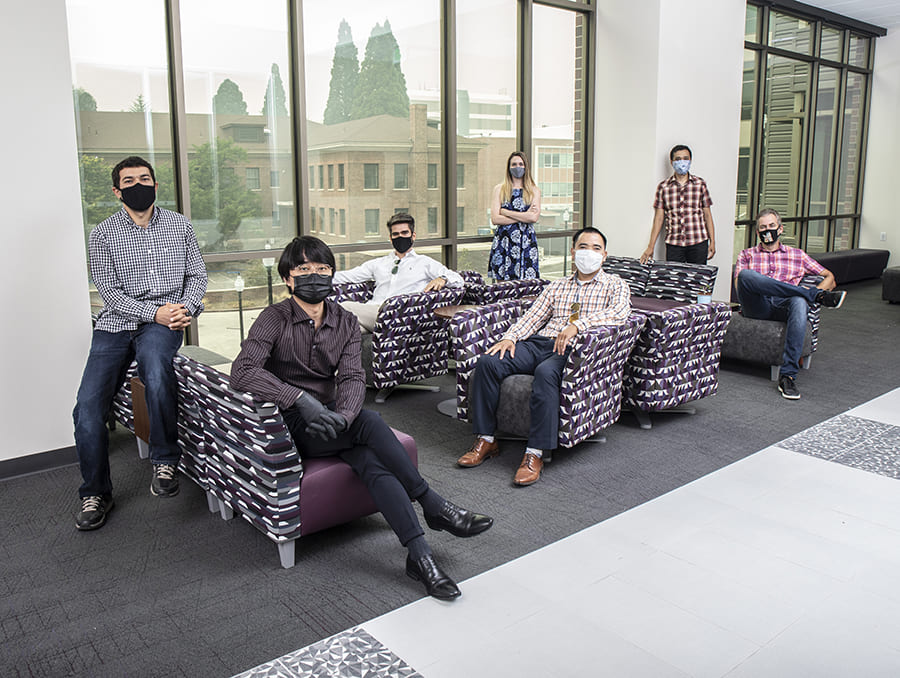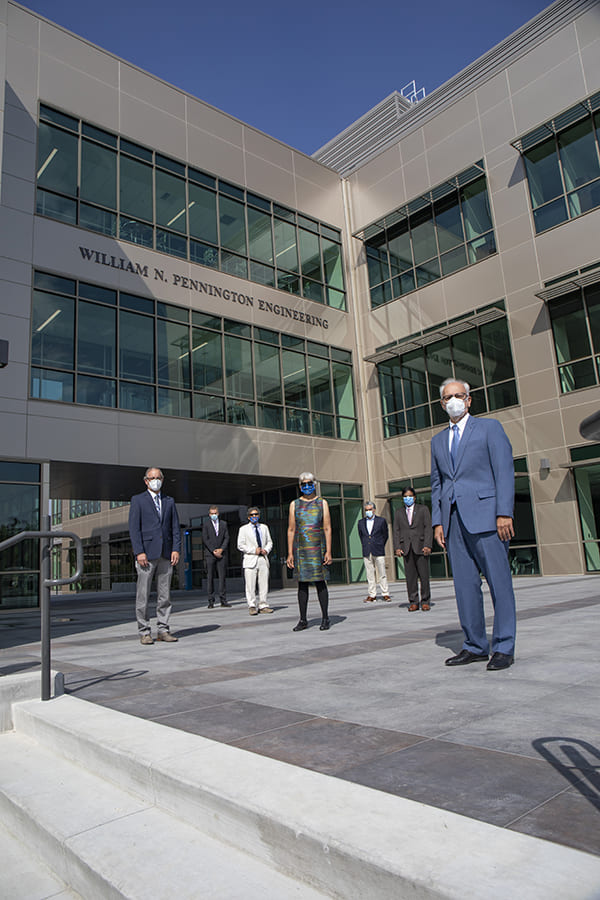Department of Electrical and Biomedical Engineering Associate Professor Jeongwon Park’s research is at the intersection of biomedicine, the “internet of things” and advanced manufacturing. Working at the level of the nanometer (for scale, the width of a human hair is 150 nanometers), his wide-ranging work includes the creation of nano-sensors and devices to help motor skills for those with Parkinson’s Disease, improved ultrasound readings for physicians-in-training and highly sensitive sensors for the detection and identification of airborne chemicals and biological agents. As silicon chips reach their limits in power conversion, he is investigating Gallium nitride (GaN) electronics as a greener, more energy efficient alternative. At every turn, his work is informed by a desire to help people and the environment.
Like many members of the College of Engineering, Park’s ability to advance his research will be significantly enhanced in the new building’s Class 100 Cleanroom. Supported by a mechanical room with ten independent air and water systems, the cleanroom is a carefully calibrated and maintained laboratory that reduces air contaminants from an average of up to 1,000,000 parts per cubic foot down to 100. This degree of air purity is unmatched by publicly available laboratories in the state of Nevada, and it is essential for research like Park’s in biosensing, nanotechnology and advanced manufacturing.
“This cleanroom will allow us to build a state-of-the-art multidisciplinary research laboratory, which will in turn allow the University to emerge as one of the premier world institutes in nano/micro electronics and nanotechnology-enabled research,” Park said. “The cleanroom will allow my research group to fabricate nanoelectronic devices, and conduct fundamental materials research, thereby creating a novel platform for nanotechnology-enabled nanoelectronics and sensors.”
While the cleanroom will help Park and other researchers on campus develop life-enhancing technologies, the laboratory will also play a key role in the diversification of the local economy. Demand for the large-scale development of nano/micro-devices is on the rise, and northern Nevada is well positioned to become a leader in the advanced manufacturing necessary to bring these technologies to market. According to Park, the number of manufacturing jobs in Nevada has already increased by 45.2 percent from 2010 to 2018, while the national average growth over the same period was 9.9 percent. By comparison, in Reno alone, manufacturing has grown by 104.6 percent. And expansion in advanced manufacturing is expected to continue over the next decade.
“For the local industry, the cleanroom will serve as a resource for advanced manufacturing for nano/micro- devices, sensors, biomedical devices, and product prototyping,” Park said. “The cleanroom will enhance collaboration with local industry partners and enable collaborative projects with the University, in turn creating further opportunities for student training including internships at global companies and national labs.”
While most cleanrooms are behind window-less walls and closed doors, visitors will be able to watch researchers in the cleanroom by looking through the floor-to-ceiling windows that provide a glimpse at the high-impact experiments conducted in its research bays.
Park said, “The cleanroom will spawn new ventures and transfer technology to industry at both the national and international levels, thereby contributing to the University’s development as an innovative, knowledge-based economy.”

